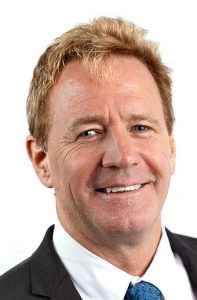
(Second in a five-part series examining the shortage of feminized hempseeds and clones and its effects on the hemp industry. To read the previous installment, click here.)
Hemp farmers looking to capitalize on the lucrative demand for high-CBD hemp varieties may still be able to salvage their 2019 season even though the industry is seeing a shortage in feminized seeds and clones.
Hemp production experts suggest planting non-feminized seeds and culling male plants early, or planting larger-sized clones later in the season, if farmers can find any available.
But the key to success in future seasons is planning ahead and developing the necessary relationships for sourcing a reliable supply of high-quality feminized seed and clones, they say.
“This number can be as high as 80% in states with relatively new laws and farmers just trying to get registered, while in more established hemp states, the ratio may be closer to 20% to 40%,” Seleznov told Hemp Industry Daily.
Aside from seed- and clone-supply issues, wet weather across many growing regions of the U.S. has complicated matters for farmers of all crops, including hemp, said Chris Boucher, CEO of San Diego-based Farmtiva.
Tim Gordon, CEO of Colorado-based Functional Remedies, said he would guess a third of the farmers interested in hemp “will have some kind of issue preventing hemp farming this year.”
The bigger question, said Cory Sharp, CEO of HempLogic in Washington state, is how many farmers will plant and not get crops off the field because they didn’t plan their harvest?
As part of Hemp Industry Daily’s weeklong focus on the current shortage in high-CBD feminized seed and clones, these hemp experts weighed in on what farmers facing the end of planting season can still do to participate in the 2019 growing season:
What can growers experiencing shortages do to ensure they get what they need for inputs this year?
Alex Seleznov, CEO, Advanced Extraction, Colorado
 Unfortunately, the best answer for this does not help them in 2019.
Unfortunately, the best answer for this does not help them in 2019.
We had almost half of our 2019 feminized clone program sold out in November of 2018 and 80% sold out in February, including 100% of the peak planting period in May through June.
This was due to the number of growers in 2018 that experienced challenges with other feminized clone producers and, more frequently, seed producers.
The result (saw) farmers receiving small malnutritioned clones, not getting their clones at all or in (the) quantity ordered, and problems with feminized seed not being as advertised was rampant.
The smart farmers are securing inputs earlier and earlier from trusted providers and not concentrating orders completely with one supplier.
 Chris Boucher, CEO, Farmtiva, California
Chris Boucher, CEO, Farmtiva, California
Planning ahead is key.
Working with a seed supplier ahead of time is important.
This year in California, a lot of farmers and suppliers decided to wait out the season and planted other crops.
Cory Sharp, CEO, HempLogic, Washington state
Find good, non-feminized seed and cull the males.
 Steven Turetsky, managing director, Shi Farms, Colorado
Steven Turetsky, managing director, Shi Farms, Colorado
I would just be very, very careful in how they’re sourcing.
The answer is to start earlier, and unfortunately, that wasn’t even an option for a lot of farmers in places like Illinois or Michigan that just gave out the licenses.
So, you couldn’t even really build your business or invest in the seeds early in the season like you wanted to because of the regulations.
There are still seeds on the market, but you have to realize that this late in the season, if people still have seeds available, knowing that most legitimate feminized seed producers are sold out, you’ve got to be careful about what you’re sourcing because it might not be that high-quality stuff.
What I’m telling producers that are looking to farm this year … (but) they don’t have enough is, “Maybe you can think about scaling down your acres. Plant something so you can learn, but you don’t need to plant 100 acres or 500 acres this year with bad-quality seed because what’s the benefit?”
As we get closer to the end of spring planting season, how has the demand changed for growers who haven’t sourced seed/clones yet? Are they going more for larger-sized clones or seedlings/plugs for planting in the fields versus seed?
Seleznov
A larger input size would always be my recommendation for going in late.
Last year, we tested this in our fields and found we were able to get significantly larger yields from 4-inch pots (about 4 inches wide and 6 inches tall of soil mass with about 8-12 inches of plant height) than our higher-density trays of Ellepot plants (about 2 inches wide and 3 inches tall of soil mass with about 3-6 inches of plant height).
I was just reviewing the data, and 4-inch plants that went out July 21 – more than 10 days after a planting of Ellepots – produced on average more than … (.50) pounds of additional flower.
(Ellepots are plugs made from organic growing media and wrapped with organic, biodegradable paper, in which clones are rooted or seeds can be sown to germinate into plugs or seedlings.)
Boucher
We are seeing a last-minute demand.
Also, we are looking to supply seed to California farmers wanting to grow a fall crop, which is great, because no other states can grow in the fall or winter except certain places in California and Arizona.
Turetsky
No doubt, especially since there’s still a lot of people that don’t have genetic material and they think they’re going to plant this year. It’s already June, so at this point, people are definitely looking for shortcuts, and the shortcuts don’t always work based on planting time.
Interviews have been edited for length and clarity.
(Tomorrow: How these experts say the landscape has changed for sourcing hemp genetics since the 2018 Farm Bill passed in December.)
Laura Drotleff can be reached at [email protected]

